Located between the Dominican Republic and the Virgin Islands, Puerto Rico is an unincorporated territory of the United States and home to almost 4 million people. The tropical climate and ease of travel make the island a popular tourist destination. Those who visit “the island of enchantment” are sure to be wowed by the beautiful flora endemic to this small island. Here are 15 of the most beautiful flowers native to Puerto Rico.
1. Flor de Maga (Thespesia grandiflora)

©Warewardson/Shutterstock.com
The Flor de Maga was named the official flower of the Commonwealth of Puerto Rico in 2019. The plant likely originated in the moist limestone region of the island, but it has since propagated all over the wet areas of Puerto Rico due to deforestation.
The maga tree, on which the Flor de Maga blooms, can grow up to 65 feet high. The blossoms of the Flor de Maga range from dark pink to deep red. It is sometimes erroneously labeled as a hibiscus in English, but it is not a true hibiscus.
The maga tree is valued for its timber and Flor de Maga blooms are often used as ornamental plants.
2. Desert Cassia (Senna polyphylla)
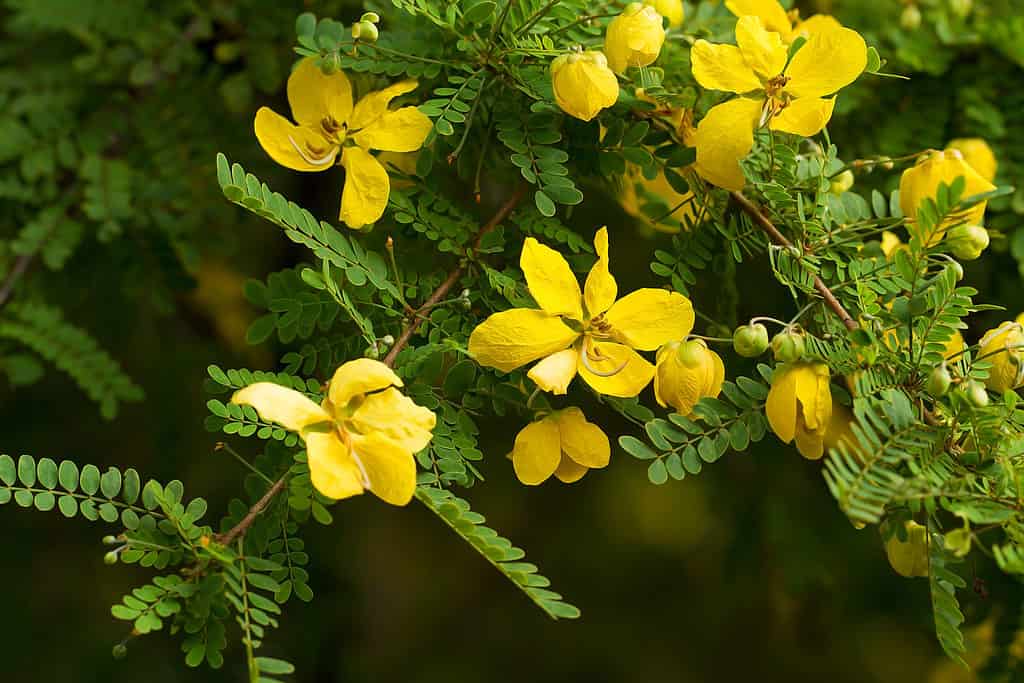
©Jillian Cain Photography/Shutterstock.com
The topography of the Cordillera Central mountains causes dichotomous climates on the island. Some areas of the island are classified as rainforests, while others experience near desert-like conditions.
The desert cassia thrives in the dry areas. It is a shrub (some consider it a small tree) that can grow up to 10 feet in height.
The blooms are a beautiful yellow five-petal flower that is a magnet for pollinators. The plant’s tolerance for dry conditions make it a popular ornamental plant due to the ease of care.
3. Spurred Butterfly Pea (Centrosema virginianum)
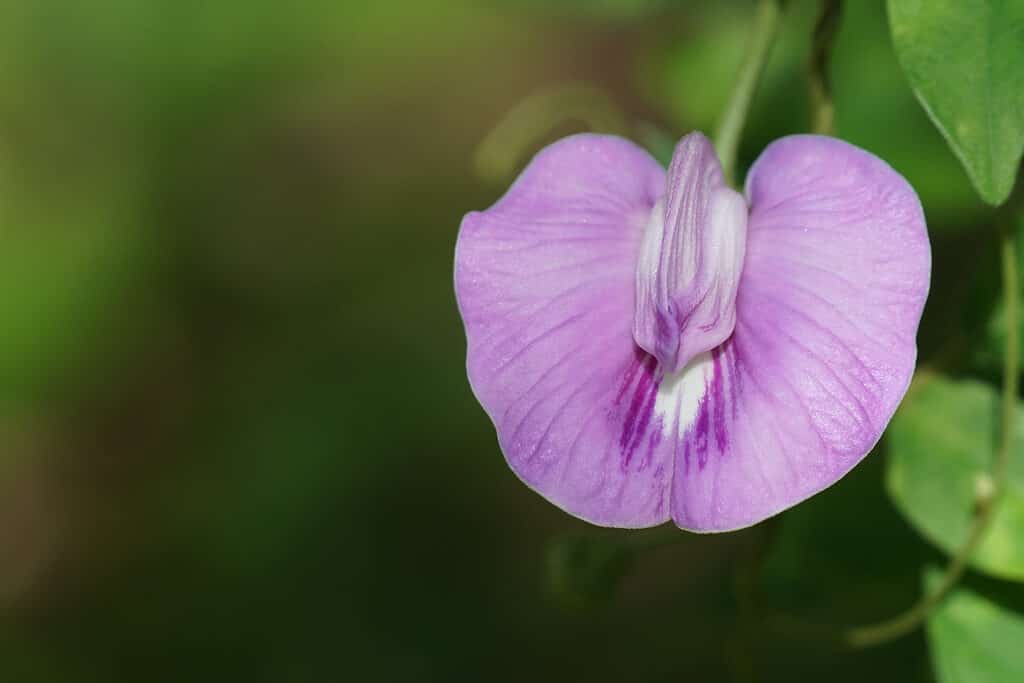
©Doikanoy/Shutterstock.com
With alternate names such as the blue bell, wild blue vine, and wild pea, the spurred butterfly pea is a vining plant that can grow up to 12 feet long. It is normally a climbing plant, but can also sprawl across the ground if there is no support available.
The showy petals vary between white, blue, violet, and pink. The petals on this perennial have a unique upside-down appearance, making them a popular target for photographers and artists.
4. Hammock Viperstail (Pentalinon luteum)
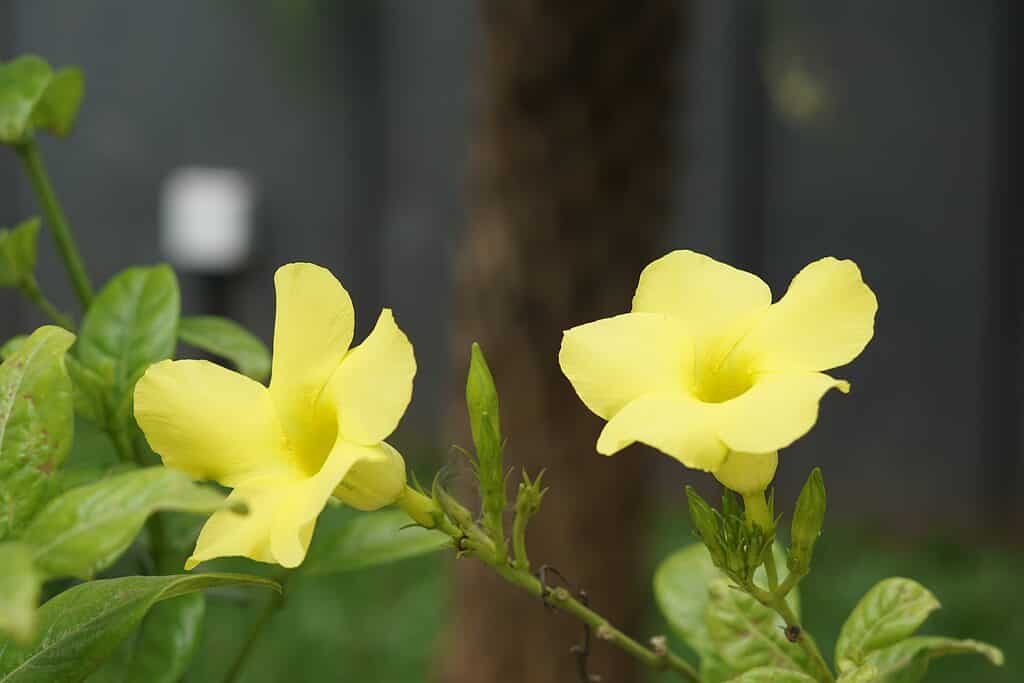
©Albin Raj/Shutterstock.com
The hammock viperstail is another plant with many names, sporting alternate monikers such as the wild allamanda, wild wist, yellow mandevilla, and yellow dipladenia.
This perennial can range from 3-12 feet in size and features one of the most truly interesting blooms you will ever find. This showy flower features five yellow petals that bloom into a windmill-type shape.
Be careful, though. Handling this plant can irritate your skin and it is toxic if ingested. When it comes to this beautiful tropical flower, look but don’t touch!
5. West Indian Milkberry (Chiococca alba)

©Sunshower Shots/Shutterstock.com
With alternate names such as David’s milkberry, cahinca, and West Indian snowberry, the West Indian milkberry is a member of the coffee family, although no one is brewing it for a morning pick-me-up. Maybe that is partly because it has historically been used in herbal medicine as a diuretic and a laxative!
When in bloom, it features small yellow, bell-shaped flowers. They are known as panicles, a loose branching cluster of flowers. The clusters can range from six to eight blooms on this tropical vining plant.
6. Beach Morning Glory (Ipomoea pes-caprae)
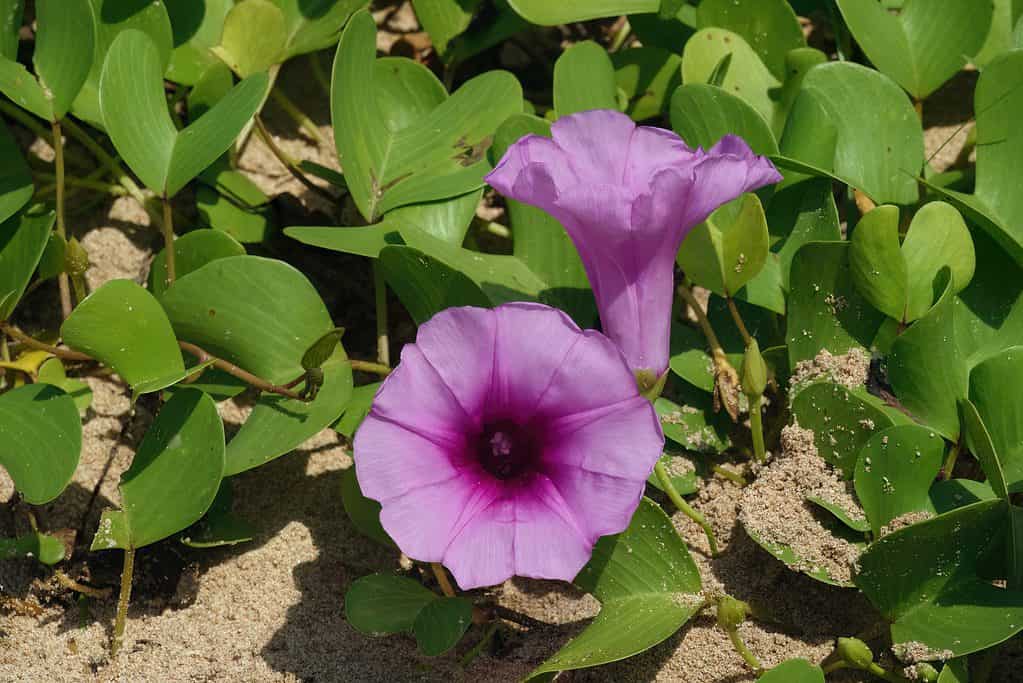
©MOrhon/Shutterstock.com
The beautiful flowers on this creeping vine are pink with a darker center. But don’t let this delicate-looking bloom fool you. This is one hardy plant.
Also known as bayhops or goat’s foot, the beach morning glory grows on beaches and easily tolerates windy sandblasts and harsh saltwater. It spreads through oceanic dispersal. The seeds of the plant float and are unharmed by saltwater.
7. Tree Cactus (Pilosocereus Azureus)
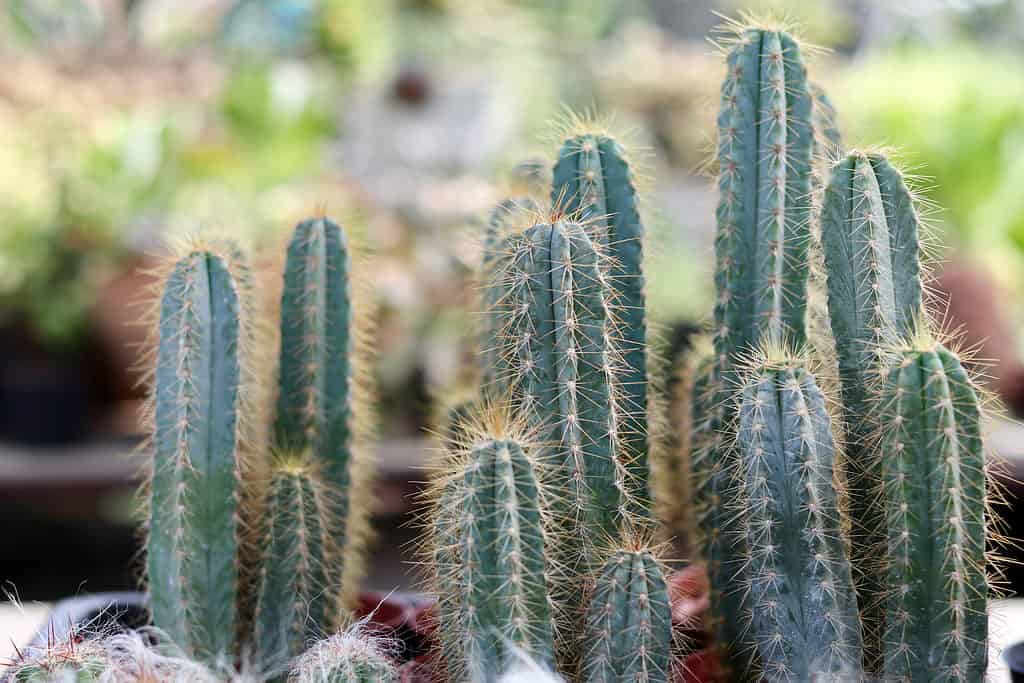
©kikpokemon/Shutterstock.com
The tree cactus, also known as the blue torch cactus, is a beautiful bluish-green. The spines are gold or orange and the flowers on this cactus plant are a vibrant blue.
While native to the Caribbean, the blue-gold-orange cacophony of this plant has made it a desired ornamental piece in homes and gardens around the world.
8. Prickly Pear (Opuntia)
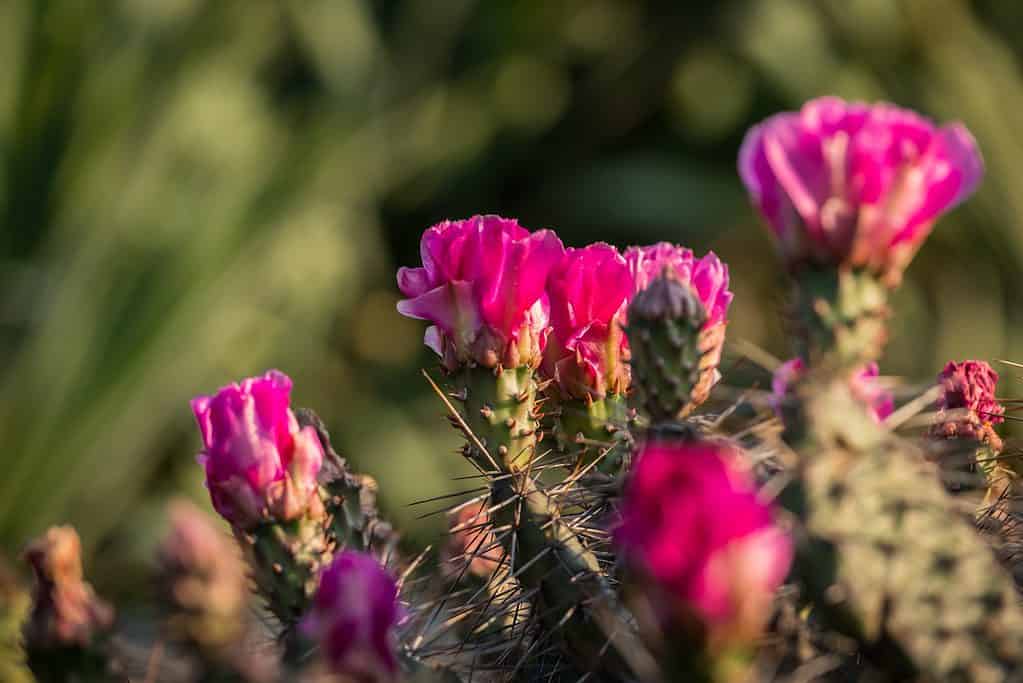
©vitaprague/Shutterstock.com
Prickly pear species are found throughout the Caribbean islands, as well as Mexico and parts of the United States.
The plant produces a fruit, known as tuna; it also is used to make aguas frescas, a popular fruity drink. The color of the fruit can vary from deep red to green.
Depending on the variety, the blooms on this flowering cactus plant range from golden yellow, pink, red, purple, and orange. If you catch one in bloom, it is certainly a photo-worthy moment.
9. Sea Purslane (Sesuvium portulacastrum)
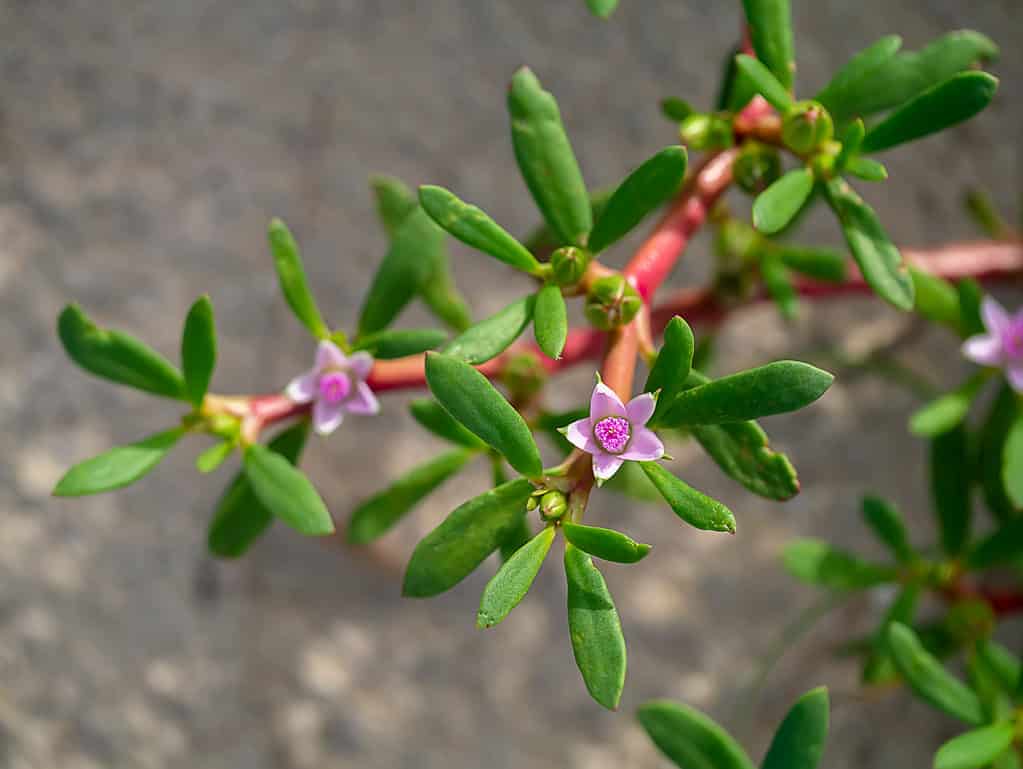
©NOPPHARAT247865/Shutterstock.com
The sea purslane is also known as the shoreline purslane. While this plant is not a rare sighting in much of the world, it still sports beautiful blooms that ought not be overlooked.
The plant is a perennial herb that thrives in coastal areas. The bright pink or purple blooms stand out in a most lovely way against the dark green, fleshy leaves.
Extract from the has been used as in antibacterial applications.
10. Beggarticks (Bidens alba)

©Baramyou0708/Shutterstock.com
The rather unflattering name of this plant belies its reputation. Due to its proliferation, it is often seen as a nuisance weed. In reality, it is a wildflower that, while potentially problematic, is also beautiful in its own right.
The blooms range from five to eight white ray florets that encircle the yellow center of the flower.
When mature, the leaves have a hairlike underside and spiny margins or edges.
The seeds from this plant have barbs that easily cling to clothing, hair, skin, and animal fur. This allows the wildflower to quickly disperse over a vast range. It is considered an invasive plant in some parts of the world.
11. Tree Seaside Tansy (Borrichia arborescens)

©Francisco Herrera/Shutterstock.com
Also known as the tree seaside oxeye, this flowering plant is in the same family as daisies and sunflowers. With a high tolerance for saltwater, it can thrive in both coastal and marshy environments, provided there is full sun.
Despite its name, the plant is not a tree. It is a shrub that only reaches a maximum height of around five feet.
The flowers appear year-round, but the bright yellow color peaks in late spring and throughout the summer.
The plant is edible and can be brewed in teas. It has also been used for medicinal purposes, treating coughs, colds, and pain.
12. Cigar Flower (Cuphea ignea)
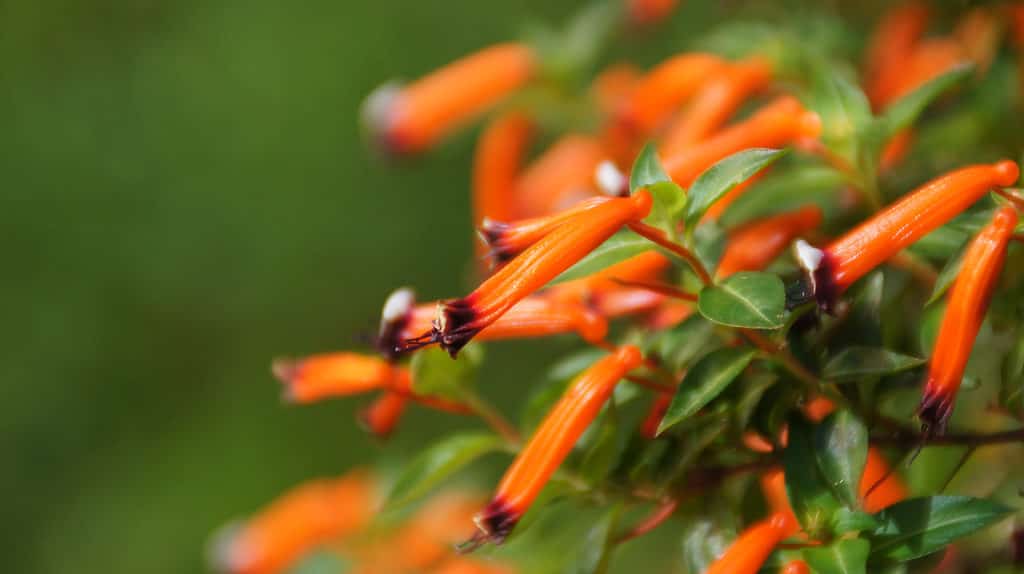
©TTONN/Shutterstock.com
Though the name suggests otherwise, this plant contains no tobacco and is not used in the making of actual cigars.
The elongated flowers resemble a tiny burning cigar in both shape and in its orangish-red color, hence the common name “cigar flower.” It is also sometimes referred to as the firecracker plant.
The blooms proliferate the shrub, creating a wonderful tropical floral display. That, combined with the plant’s ease of care and resistance to disease, have made it a popular plant in ornamental gardens.
13. Roble Cimarron (Tabebuia haemantha)
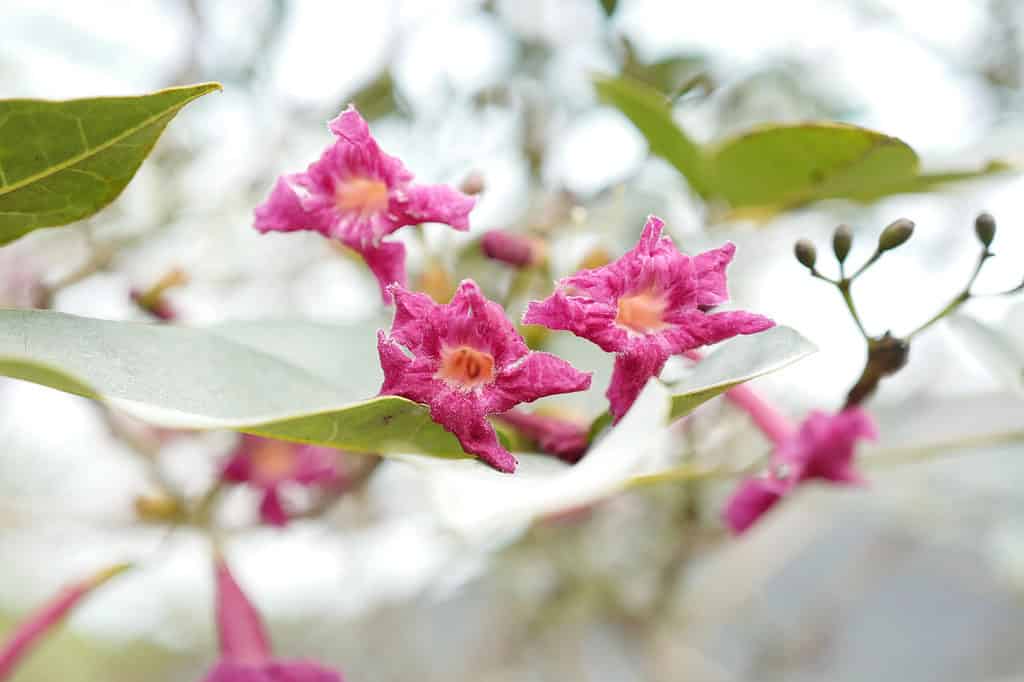
©Pavaphon Supanantananont/Shutterstock.com
Sometimes known as the blood-red trumpet tree, this small tree (or shrub) is a beauty, especially when its flowers are in full bloom.
The blooms range from pink to mauve to deep red and are visible for much of the year.
A relatively rare sighting, you’ll want to snap some close-ups if you come across this one.
14. Buttonsage (Lantana involucrata)
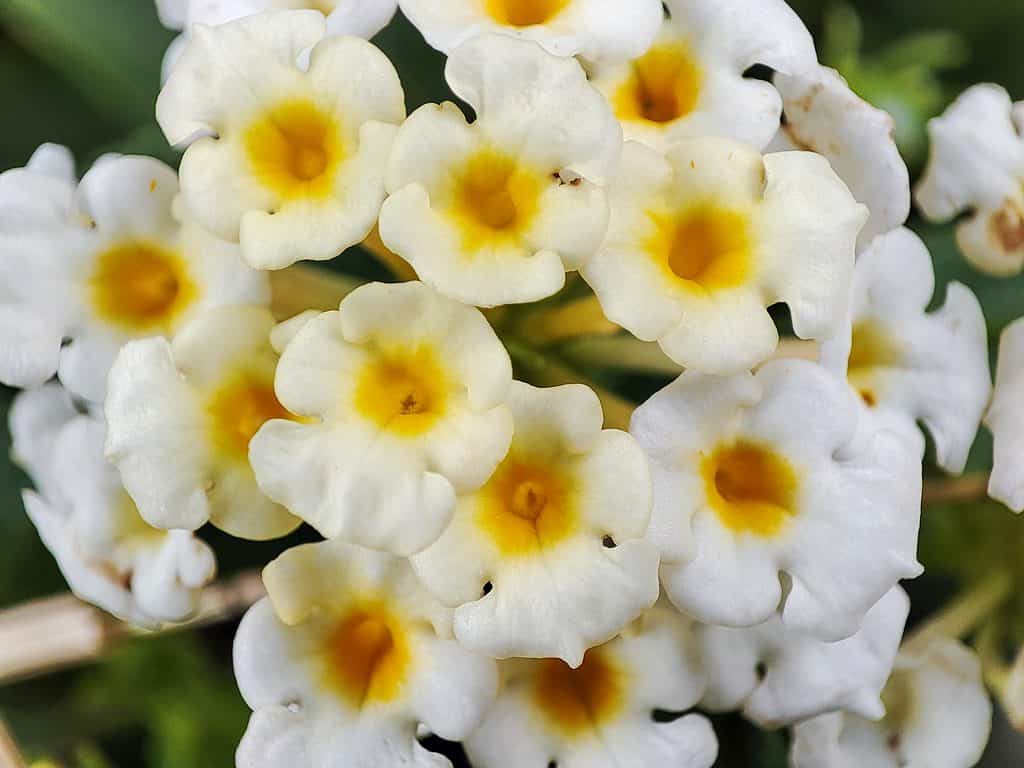
©Mr Syaf/Shutterstock.com
This evergreen shrub produces clusters of small, aromatic flowers that bloom year-round. The blossoms range from white to lavender and the flowers’ nectar is a powerful attractant for butterflies and other pollinators.
The shrub grows up to 5 feet tall, with an equal 5-foot spread. It is a hardy plant that tolerates drought and salt spray.
15. Mountain Love in the Mist (Passiflora tulae)

©Tohuwabohu1976/Shutterstock.com
As the name suggests, this flower is found in mountainous areas. This plant is a climbing vine, with tough, shiny leaves.
It has more than one romantic name. It is also known as the pink passionflower. Its bright pink petals encircle the dark, multicolored center of the flower. It could provide a perfect backdrop for a day out in the tropics with your sweetheart!
